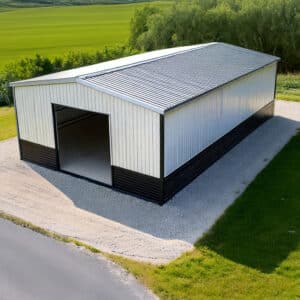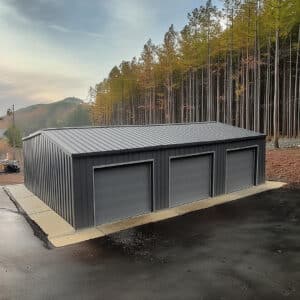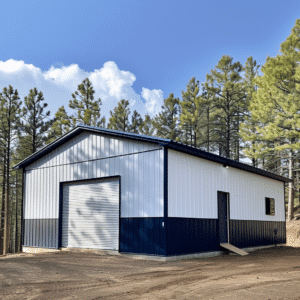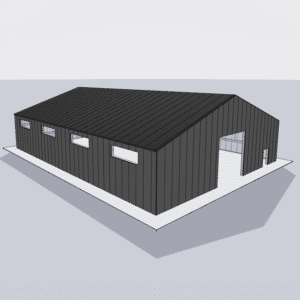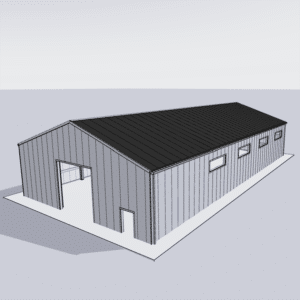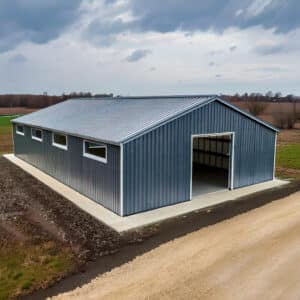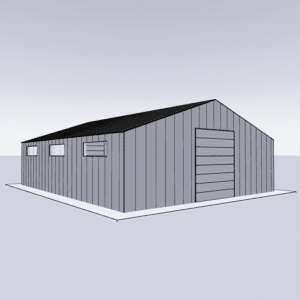Pole Barns vs. Steel Buildings: Which is Better?
When it comes to building a garage, storage space, or agricultural facility, choosing between a pole barn and a steel building can be challenging.
Steel Building Maintenance Guide
Building Insulation
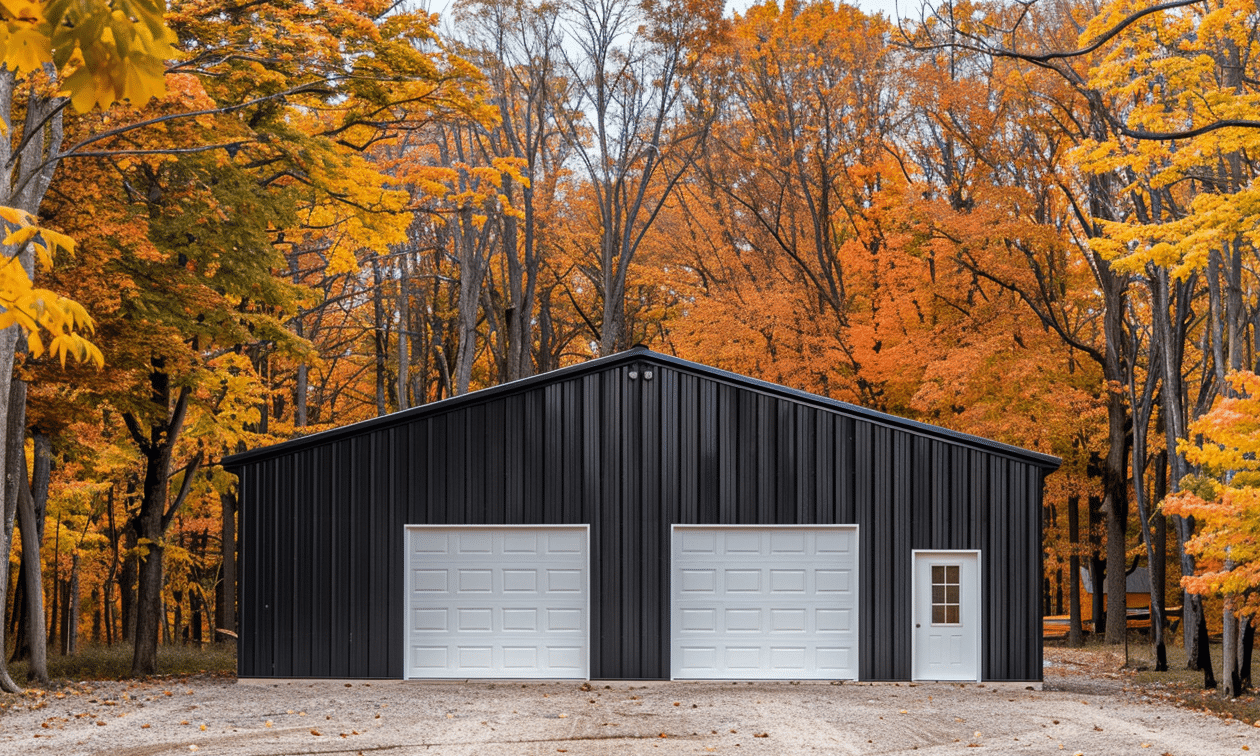
Both offer benefits, but they serve different purposes and have unique characteristics that may make one a better fit for your project than the other. In this guide, we’ll break down the key differences between pole barns and steel buildings to help you make an informed decision.
1. What is a Pole Barn?
A pole barn is a building supported by posts or poles that are embedded in the ground, typically made from wood or metal. Pole barns are popular for agricultural uses such as barns, animal shelters, or equipment storage.
Advantages of Pole Barns:
- Cost-Effective: Pole barns are generally less expensive to build, especially for smaller structures.
- Quick Construction: Because they don’t require a full foundation, pole barns can be built quickly, making them ideal for short-term projects or those on a tight timeline.
- Versatility: Pole barns are versatile and can be used for a variety of applications, including farm storage, workshops, or even homes.
Disadvantages of Pole Barns:
- Durability Issues: Over time, wood poles may deteriorate due to moisture, rot, or pest infestation, which can compromise the building’s structural integrity.
- Limited Lifespan: Pole barns typically have a shorter lifespan than steel buildings due to the vulnerability of wood to environmental damage.
- Maintenance: Wooden structures require more maintenance, such as regular treatments to prevent rot and insect damage.
2. What is a Steel Building?
Steel buildings are structures made primarily of steel frames and panels. These buildings are widely used in commercial, industrial, and residential applications due to their strength, durability, and low maintenance requirements.
Advantages of Steel Buildings:
- Durability: Steel is naturally resistant to pests, fire, rot, and extreme weather conditions, making steel buildings incredibly durable and long-lasting.
- Low Maintenance: Unlike wood, steel requires minimal upkeep. There’s no need to worry about termites, mold, or regular treatments to prevent decay.
- Energy Efficiency: Steel buildings can be insulated to improve energy efficiency, making them ideal for year-round use in various climates.
- Customization: Steel buildings offer extensive customization options, from roof styles and layouts to doors and windows.
- Long Lifespan: With proper care, steel buildings can last for decades, often outlasting wood-based pole barns.
Explore our range of Steel Building Kits for customizable options to suit your needs.
Disadvantages of Steel Buildings:
- Higher Upfront Cost: Steel buildings can be more expensive to build initially compared to pole barns, but the long-term savings in maintenance and longevity often offset the higher initial investment.
- Foundation Requirements: Steel buildings typically require a concrete foundation, which can add to the cost and time of construction.
3. Key Differences Between Pole Barns and Steel Buildings
When deciding between a pole barn and a steel building, consider the following key differences:
A. Construction Time
- Pole Barns: Pole barns can be built relatively quickly, as they do not require a full foundation. The poles are set in the ground, and the structure is built around them.
- Steel Buildings: Steel buildings take longer to construct because they typically require a foundation and more precise assembly, especially if customization or insulation is involved.
Need help with construction? Check out our Full-Service Turnkey Steel Buildings for professional assistance.
B. Lifespan and Durability
- Pole Barns: While cost-effective, pole barns have a shorter lifespan due to the susceptibility of wood to rot, pests, and environmental conditions.
- Steel Buildings: Steel structures are built to last for decades, requiring less maintenance and offering superior protection against environmental factors such as fire, wind, and moisture.
C. Foundation Requirements
- Pole Barns: Pole barns typically don’t require a full foundation, which makes them more affordable but less stable for long-term use.
- Steel Buildings: Steel buildings generally require a concrete slab or footing, adding stability and longevity to the structure.
For more information on foundations, visit our Steel Building Design Guide.
D. Environmental Impact
- Pole Barns: Using wood in construction contributes to deforestation unless you use sustainably sourced materials. Additionally, wooden buildings are less energy-efficient unless extra insulation is added.
- Steel Buildings: Steel is one of the most environmentally friendly building materials due to its recyclability and durability. Steel buildings can also be insulated for better energy efficiency, reducing your overall carbon footprint.
Learn about the Environmental Benefits of Steel Buildings for a more sustainable choice.
When considering your options, it’s essential to take into account the specific needs of your location and the intended purpose of your structure. For residents in Ontario, both steel buildings and pole barns are popular choices for agricultural, commercial, and residential use. Explore the advantages of steel buildings in Ontario for their durability and low maintenance, or consider the affordability and quick construction benefits of pole barn kits in Ontario to find the best fit for your project.
-
30×50 Metal Building MB212305014W0 Deposit
$18,000.00 Add to cart -
30×50 Garage Package Deposit
$8,500.00 Add to cart -
30×30 Garage Package Deposit
$8,500.00 Add to cart -
20×40 Garage Package Deposit
$5,500.00 Add to cart -
60×80 Steel Building Kit Deposit
$20,000.00 Add to cart -
50×100 Steel Building Kit Deposit
$20,000.00 Add to cart -
50×80 Steel Building Kit Deposit
$20,000.00 Add to cart -
50×60 Steel Building Kit Deposit
$20,000.00 Add to cart
4. Cost Comparison
The cost of both pole barns and steel buildings depends on factors such as size, location, and customization. Here’s a general breakdown of the costs associated with each:
- Pole Barns: Pole barns are typically less expensive upfront due to the lower cost of materials and the lack of a foundation. However, they may incur higher maintenance costs over time due to the vulnerability of wood to moisture and pests.
- Steel Buildings: While steel buildings have higher upfront costs, they offer long-term savings thanks to their durability, minimal maintenance, and energy efficiency. Additionally, steel buildings often hold their value better than pole barns due to their longer lifespan.
For a detailed breakdown of costs, check out our Cost Estimation Guide for Steel Buildings.

Residential Construction
Your dream home or residential steel building project is in good hands with us.
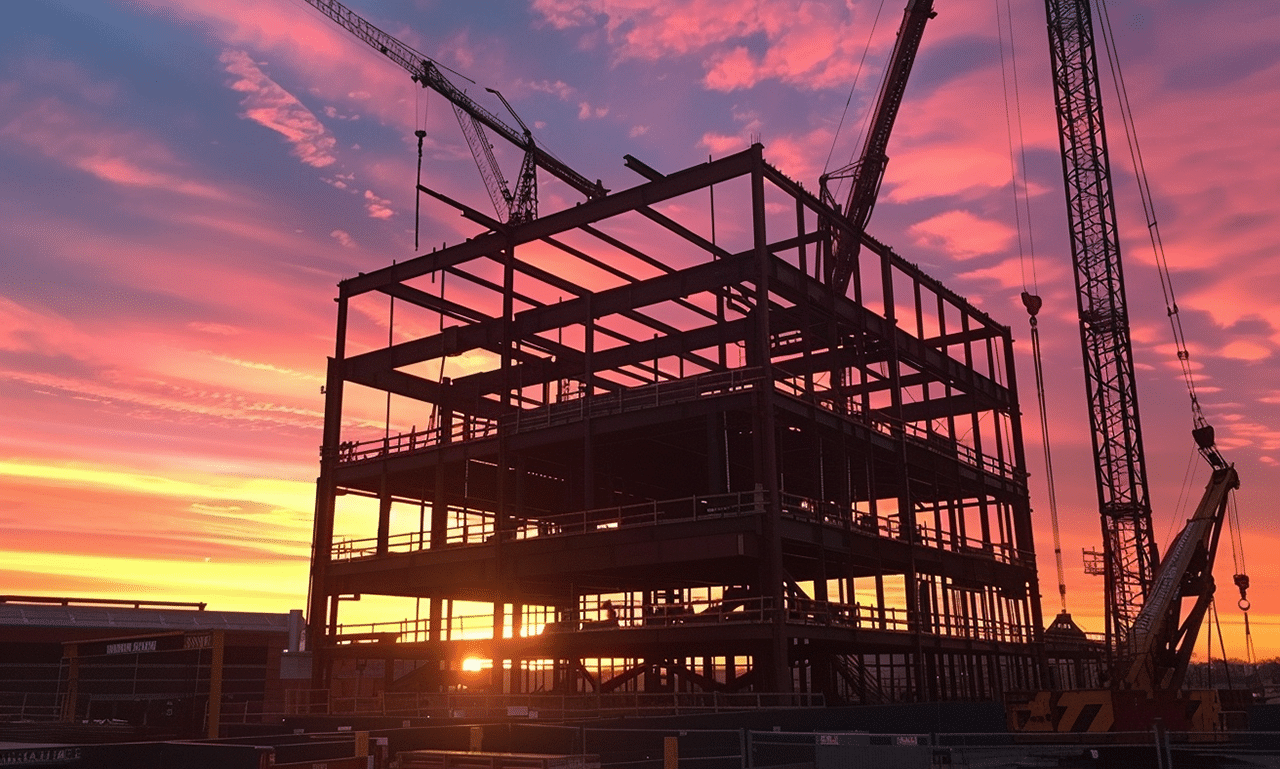
Commercial Construction
From warehouses to office spaces, we manage the design, construction, and ...
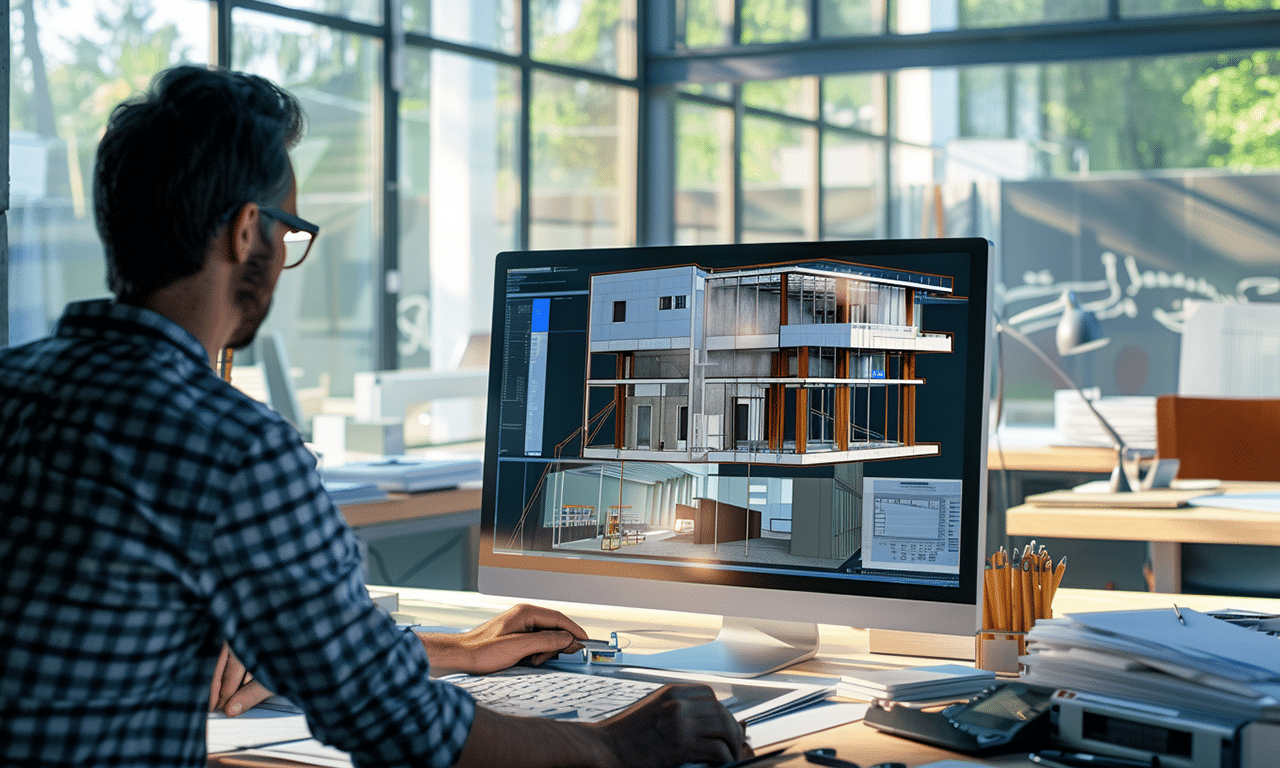
Custom Building Projects
Tailoring every aspect to your vision, our Building Projects service delivers unique steel structures
5. Ideal Applications for Pole Barns and Steel Buildings
Depending on your specific needs, one building type may be better suited than the other. Here are some ideal applications for each:
-
Pole Barns:
- Agricultural storage
- Animal shelters or barns
- Temporary or seasonal structures
- Light-use workshops
-
Steel Buildings:
- Commercial garages or auto repair shops
- Industrial warehouses
- Long-term agricultural storage
- Residential garages or workshops
- Storage for heavy machinery or vehicles
Discover how steel buildings can serve different applications in our Custom Steel Buildings section.

Describe Your Project
Share your project details, and we’ll assign you an expert to provide tailored advice and guide you through the next steps.
Step 02
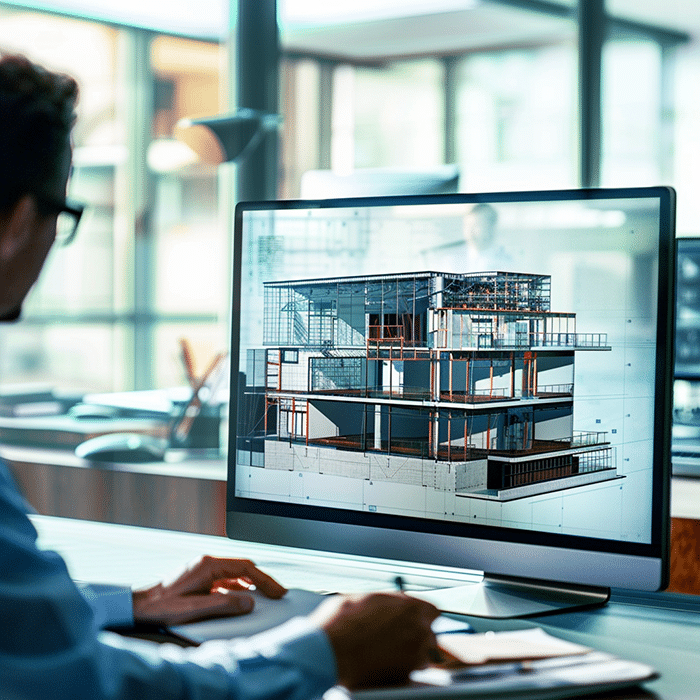
Get a Tailored Quote
Based on your project requirements, we’ll provide a customized quote that includes design, materials, and any additional services you may need.
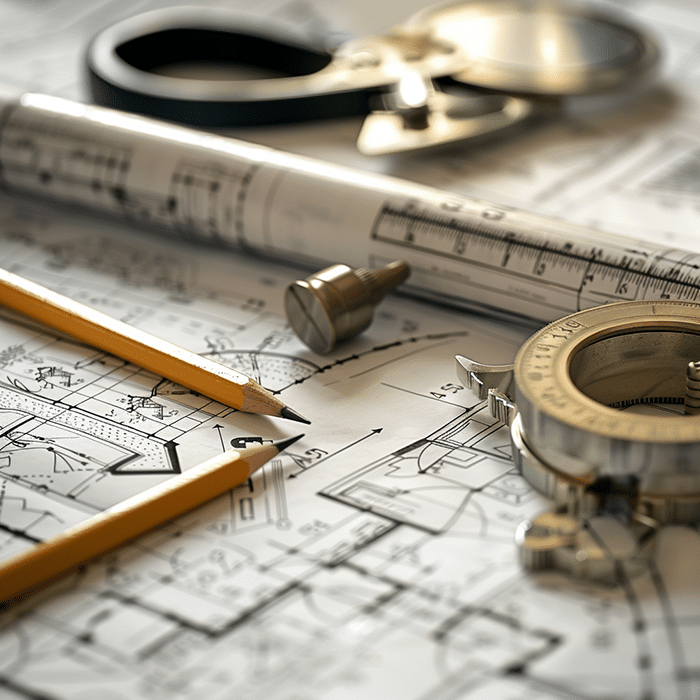
Questions - Approvals
Review the project plan and design we propose. Once you approve, we’ll finalize the timeline and prepare everything to start the process.

Start Building
Our skilled professionals will begin the construction process, delivering high-quality workmanship and keeping you informed every step of the way.
FAQ’s
What are the benefits of choosing a steel building
Steel buildings are durable, cost-effective, energy-efficient, and customizable for a variety of uses, from residential to commercial projects.
How long does it take to complete a steel building project?
The timeline depends on the project’s size and complexity, but most steel building projects can be completed faster than traditional construction.
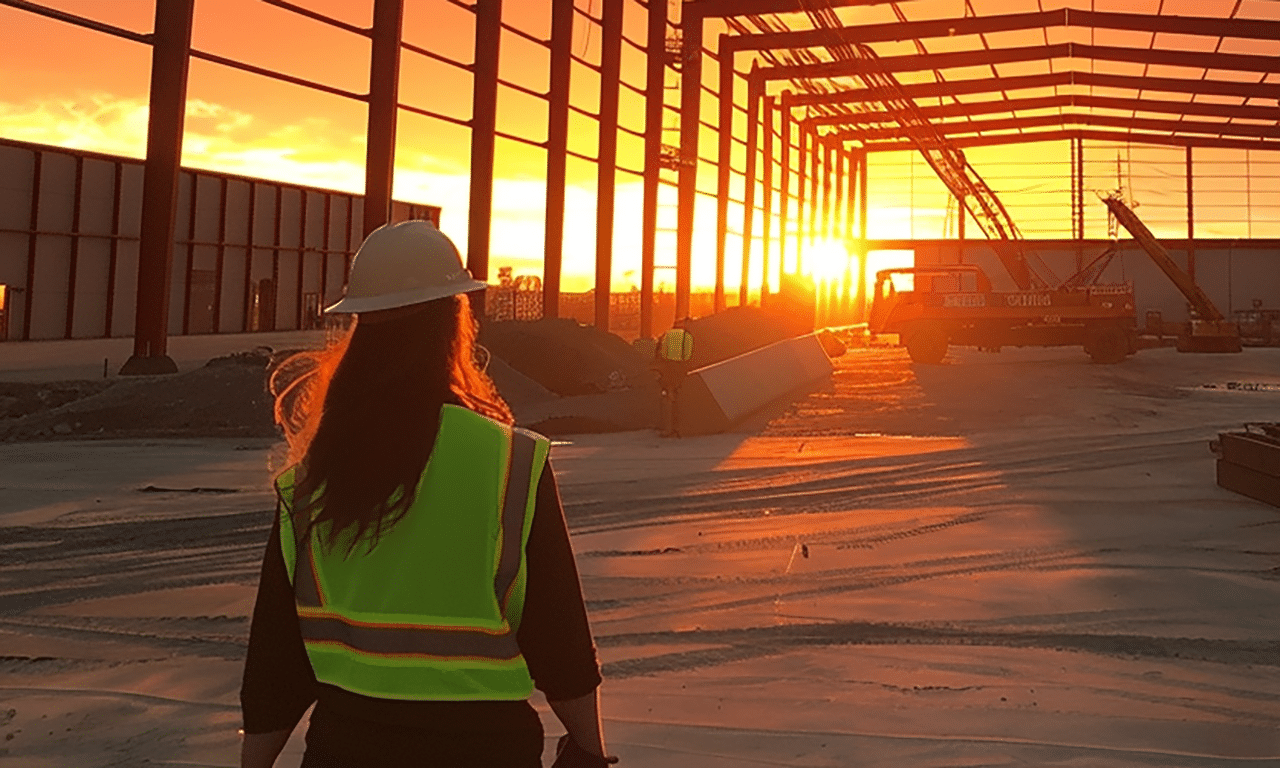
Do you offer custom designs for steel buildings?
Yes, we provide fully customized steel building designs to meet your specific needs, whether residential, commercial, or industrial.
Are steel buildings energy-efficient?
Yes, steel buildings can be designed with insulation, reflective materials, and energy-efficient features to reduce operational costs.
Conclusion: Which is Better?
When deciding between a pole barn and a steel building, it ultimately depends on your needs, budget, and the building’s intended use. Pole barns may be a good option for short-term, cost-effective structures, particularly in agricultural settings. However, if you’re looking for a durable, long-lasting, and low-maintenance building, a steel structure is often the better investment, especially for residential or commercial use.
For expert guidance on choosing the right structure for your project, visit our Steel Building Kits page or Contact Us today to discuss your specific needs.
Your Building Project, Simplified
- Clear, upfront pricing
- Thorough evaluation to ensure the best value for your investment
- Flexible customization options
- Fast delivery times
- Expert guidance to keep you fully informed at every step
Contact


